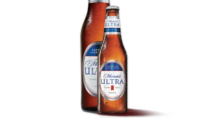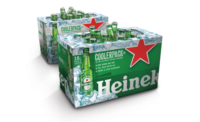Many baseball fans credit sabermetrics as helping to evolve the game. Statistics such as on-base percentage, slugging percentage and on-base plus slugging have become valuable tools for general managers when evaluating talent. Just as America’s Favorite Past Time has evolved, so has the U.S. beer market. One segment that has benefited from that evolution is imported beer.
“The imported beer market has evolved dramatically over the past 20 years,” says Brian Sudano, managing partner with New York-based Beverage Marketing Corporation (BMC). “Originally, imported beers were styles not seen in the U.S. Part of the value proposition dealt with the authenticity and attachment to a specific origin or province. With the rapid growth and penetration of craft beer, more flavorful beers are readily available. Tap rooms have taken on the mystique similar to foreign lands. As a result, the specialness has been somewhat eroded.”
Sudano predicts that the import segment will continue to grow for the next five years, but that growth likely will come from specific regions.
“Mexican imports should be viewed separately [from] the rest of imports due to its proximity to [the] U.S.,” he explains. “To a certain degree, brands from Mexico transcend generations on a quality and emotional basis. Mexican imports are like the next generation of imported beer relevant to millennials while possessing cultural values that are penetrating into the mainstream. This trend has significant legs and can be seen with Mexican soft drinks’ rapid growth. When excluding Mexican imports, imported beer is performing in line with rest of market.”
In its June 2017 report titled “Beer in the US,” Chicago-based Euromonitor International also details the gains that imported beers, particularly Mexican imports, have realized.
(Brand family)
| DOLLAR SALES | % CHANGE VS. PRIOR YEAR | CASE SALES | % CHANGE VS. PRIOR YEAR | |
| Corona | $2,120,113,740 | 7.8 | 65,861,197 | 65,861,197 |
| Modelo | $1,656,734,819 | 23.6 | 54,525,885 | 21.1 |
| Heineken | $811,131,764 | 1.4 | 25,453,374 | -0.2 |
| Dos Equis XX | $387,201,888 | 2 | 12,179,624 | 0.3 |
| Stella Artois | $370,568,236 | 12.7 | 10,358,110 | 12.9 |
| Tecate | $224,583,446 | 0.2 | 11,040,694 | -0.4 |
| Labatt | $163,902,176 | -2.8 | 8,785,821 | -2.9 |
| Guinness | $141,867,471 | 0.4 | 3,905,175 | -0.7 |
| Pacifico | $115,267,579 | 23.4 | 3,717,399 | 21.2 |
| Fosters | $75,219,481 | 3.7 | 2,883,497 | 1.9 |
| Total sales* | $6,548,063,846 | 8.4 | 214,388,074 | 6.6 |
Source: Information Resources Inc. (IRI), Chicago. Total U.S. supermarkets, drug stores, gas and convenience stores, mass merchandisers, military commissaries, and select club and dollar retail chains for the 52 weeks ending Dec. 31, 2017.
“Imported premium lager, long an exceptionally performing beer category overshadowed by the hype surrounding craft beer, recorded the highest total volume growth of 8 percent in 2016,” the report states. “Category growth was due to sustained consumer interest in Mexican lagers, resulting from an ever-growing Hispanic population and a fondness from young consumers who view Mexican lagers as a small slice of paradise.
“Of the six major imported lager brands to achieve double-digit growth in 2016, all but one were Mexican imported beers,” the report continues. “The sole non-Mexican import, Stella Artois, is from Belgium. Belgian beers likewise enjoyed exceptional growth; however, in this case for their storied prestige and the cherished style of such beer.”
Based on data from The Beverage Information & Insight Group’s “2017 Beer Handbook” and its own data, Mintel is forecasting imported beer sales to increase 18 percentage points from 2017 to 2020, according to its October 2017 report titled “Beer and Craft Beer US.” These estimates include on- and off-premise sales, the report states.
The Chicago-based market research firm also highlights the performance of Mexican imports, crediting the price points of these beers. “Import activity appears to be favoring lower price point Mexican beer offerings, as compared to more expensive European imports,” it states.
In its 2018 third quarter fiscal year earnings release, Victor, N.Y.-based Constellation Brands Inc. noted that the beer business won the Labor Day and Thanksgiving holidays with leading share gains in the U.S. beer market. Among the company’s brands, Corona Extra and Modelo Especial continued to drive growth for the portfolio because of ongoing distribution and velocity gains. In fact, it reported that the Modelo brand family posted depletion growth of almost 17 percent during the quarter.
However, beer manufacturers recognize the potential of brands outside of the Mexican beer market. Last year, White Plains, N.Y.-based Heineken USA released a light version of its Amstel brand. Amstel Xlight is a sessionable, premium quality light beer with a full beer flavor, the company says. The light beer, which is based on an Amsterdam brewing tradition, contains 90 calories, 2 grams of carbs, 4.2 percent alcohol by volume and 4 International Bitterness Units.
Heineken USA also has been investing in various brands throughout its Five Points Trading Co. division.
In 2017, Red Stripe invested $16 million in a new, state-of-the-art production line exclusively dedicated to export markets. The investment boosts Red Stripe export production to 26,000 cases a day, more than 5 million cases a year and allows for future expansion of the brewery by as much as two times its current capacity. The new high-tech line is powered by liquefied natural gas, significantly reducing the brewery’s fuel usage, which will result in a 6,000-ton annual reduction of greenhouse gas emissions, according to the company. BI







